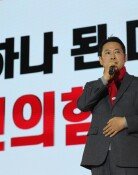Evolution of human wave tactics
Evolution of human wave tactics
Posted September. 07, 2015 07:25,
A pest killing campaign was launched to exterminate sparrows in 1958 under the charges of looting grains from Chinese people. At 4 p.m. on April 19 that year, three Beijing citizens participated in the operation and beat anything that could make loud noise. Sparrows were startled by the noise, flew to the sky and fell down. Beijing residents hit the small birds lying on the ground, and threw stones or shoot at the birds sitting on branches of trees. They put poisoned foods around the residential areas. The great sparrow war had spread across the nation and 210 million sparrows were killed (excerpted from the book titled "Story of Chinese" written by Kim Myeong-ho). The sparrow extermination campaign is truly an idea that a nation having a huge population can come up with.
According to the testimony from General Baek Seon-yeop, who fought against the Chinese army during the Korean War, the communist Chinese army was fearful and dreadful. Chinese soldiers launched guerrilla wars during the day and raided the Korean army and the U.N. forces while making loud noise with trumpets, pipes and gongs during the night. Chinese armys seemingly infinite number of soldiers, which was called as "human wave," hunted down the Korean and U.N. forces day and night. Chinese army approached not from the front but from the sides or corners, which was hardly expected. It was the so-called human wave tactics based on clever strategies. Around 300,000 Chinese combat troops were put into the Korean War. Finally, because of the great number of Chinese troops, the U.N. forces had to retreat and the Korean Peninsula was divided into the North and the South.
During its military parade to mark the 70th anniversary of the end of World War II on Thursday, China displayed more than 500 items of weaponry in 40 types. Not to mention the vast scale, the level of advancement of the weaponry was truly intimidating. The weaponery included missiles that can destroy aircrafts, unmanned drones capable of flying up to 4,000 kilometers for 20 consecutive hours, and the early alarm system that tracks 100 targets simultaneously. However, Chinas military might unveiled at the Tiananmen Square was just a tip of the iceberg. The official military budget of China is reportedly around 179 trillion won (approx. USD 148.92 billion) but its unofficial military budget is estimated to be at 258 trillion won (USD 214.65 billion). Chinas military spending might be smaller than that of the U.S., but it is bigger than the combined military budgets of Korea, Japan, Russia and India.
Chinas military parade indicated that China has shifted the focus of its military tactics from the human wave to the advanced weaponry. Chinese President Xi Jinpings has announced that he would reduce the countrys military troops by 300,000 from the current number of 2.3 million. It would be an expression of confidence in the Peoples Liberation Army armed with state-of-art weapons, instead of the number of troops. Despite President Xis pledge that China would never seek hegemony or expansion, neighboring countries would naturally feel insecure and have concerns over its growth in the military strength.
jinnyong@donga.com




![넘치는 전재수 과거 사진들…유죄의 증거일까, 무죄의 증거일까[청계천 옆 사진관]](https://dimg.donga.com/c/138/175/90/1/wps/NEWS/IMAGE/2025/12/20/132997378.1.jpg)


